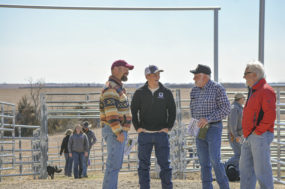Ranchers who try to reduce costs often look at out-of-pocket expenses as a way to reduce overall spending and improve short-term economics of the herd. The problem is that some of the largest expenses are also some of the most important, especially feed, mineral and herd health costs.
There are ways of reducing overall costs without neglecting the herd or jeopardizing herd production – one being the herd mineral program.
Planning ahead for weaning
From a herd health standpoint, mineral issues need to be addressed 45 to 60 days prior to weaning to prepare the calves’ immune systems for the stresses of weaning. Prep work should probably include both forage and water testing.
By sampling both the forage and water, we get a better idea of any deficiencies and antagonisms that need to be addressed with the mineral program. Be sure to sample each pasture separately and clip enough to fill a quart-sized zip top bag. Also, sample water sources separately and submit all samples to your favorite lab.
Mineral intake management considerations
With any free-choice type of product there is always variation in mineral intake, not only from animal to animal, but during the summer grazing season as well. Managing for the optimum 3 to 4 ounces per head per day is challenging. Because salt is the only nutrient in a mineral that cattle crave, it plays a critical role in both encouraging and limiting intake of a free-choice mineral. If mineral consumption is too high, then provide free-choice salt on the side.
Similarly, if intake is low, make sure the cattle do not have access to any other salt sources. Low salt minerals may be necessary in high salinity areas to maintain mineral consumption. When monitoring mineral intake, especially during mid-to-late summer, be sure to factor in mineral consumption by the calves as well as cows, as they will start to consume significant amounts of mineral as weaning approaches.
Quality and sources of minerals
When shopping for mineral brands, it is particularly important to read the fine print on the mineral label and determine the actual ingredients being used. Some mineral sources are readily available to the animal, while others are almost totally unabsorbed. As a general rule, sulfate and carbonate forms of trace minerals are more available than the oxide forms.
Trace mineral recommendations
Nearly all mineral mixes are formulated to supply supplemental trace minerals at or very close to requirements. However, there may be specific trace mineral issues you need to address.
For example, Western rangelands are typically deficient in zinc and copper. In addition, specific soil types and water sources may be high in iron (Fe), sulfur (S) and molybdenum (Mo), which compete with copper, creating a secondary deficiency or antagonism. Several trace mineral products are available that can be included with the mineral mixes to address these imbalances.
These products, often referred to as “organic” or “chelated” minerals, provide trace minerals complexed with amino acids, proteins and polysaccharides to improve adsorption and uptake by the animal. Recent research also suggests that providing ruminally available products, known as hydroxy complexes, can also improve B-vitamin synthesis and forage digestion by better meeting microbial needs.
Don’t forget the macro minerals
Phosphorous supplementation is often necessary for grazing animals because of the low phosphorous content of forage in relation to the animals’ requirement. However, over-supplementation of phosphorous is probably the most common error when selecting a mineral program. Because of our awareness of the importance of phosphorous, the tendency is to select higher phosphorous minerals without any real regard as to the necessity of it.
The biggest overriding reason to evaluate mineral phosphorous levels is cost. Phosphorous is one of the most expensive components of a mineral supplementation program. Managing phosphorous levels by season, or by stage of production, is an important way of reducing overall costs without jeopardizing performance or herd health.
Addressing mineral needs is one piece of the puzzle – herd health programs for weaning also include management to reduce stress and developing a whole herd vaccination program. Working with your veterinarian, nutritionist and local extension educator will hopefully help fill in the pieces. ![]()

-
Steven Paisley
- Extension Beef Cattle Specialist
- University of Wyoming
- Email Steven Paisley
PHOTO: Any mineral deficiencies and antagonisms need to be addressed 45 to 60 days prior to weaning to help set the calves up for success. Photo provided by Steven Paisley.








